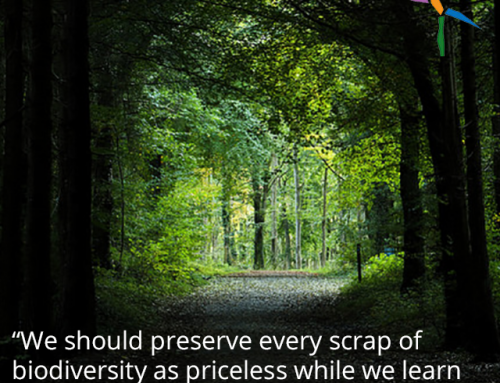The youth generation is becoming more and more eco-friendly, and that’s a great thing. In many high schools, junior highs and even middle schools, environmental clubs for students already exist. But if you (or a teenager in your life) are at a school that doesn’t have an environmental club, then it’s a perfect opportunity to gain valuable leadership skills (and all important points for college applications) by starting an environmental club. But how do you do that? And what should your environmental club kick things off with? We’ve got advice (of course!).
Step One: It All Begins with a Staff Sponsor
To get any club started in pretty much any school, you’ll need a teacher, administrator or staff member who’s willing to operate as your club or organization’s sponsor. Your first mission will be to find that all important staff member. Begin by approaching teachers whom you know have an interest in the topic matter. Science teachers, of course, are an obvious pick. But you may know an English teacher who’s adamant about recycling or who has “Save the Planet” posters up on his or her wall. Talk to them about wanting to start an environmental club and ask them to sponsor it. Don’t take it personally if your first pick has to decline. Remember, teachers are incredibly busy and many of them are already sponsoring activities. If you don’t get a yes on your first pick, ask the teacher who he or she thinks would be a good pick.
Step Two: What’s Your Mission?
The next thing is to really define what your club’s mission is. You need to do this even before you recruit members to your club because you’ll want to clearly be able to tell your members what the club will do. Is the mission of your club just to raise awareness and educate other students about the environment and the planet? Is it to improve eco-friendly and green practices in your own school? Is it to go out into the community and educate the public or fundraise for other environmental groups? Decide what it is that you’re really trying to accomplish with your club. Then make a list of five to ten activities that your club could do to achieve this mission. Why? Because just like you want to tell other potential club members what the goal of the club is, you also want to tell them what they can expect to be doing in the club. You should also decide how many times per month or how frequently your club will meet.
Remember That Environmental Means Social, Too!
You don’t need to limit your “environmental” club to just trees and carbon emissions! The word environmental means anything that impacts the planet. Don’t be afraid to include world social issues like clean water, hunger and human rights in your mission and activities. After all, the planet is a complex creature that includes all of its inhabitants.
Step Three: Make Sure You’ve Filled Out Any Paperwork
Your club advisor should know the rules about any paperwork or forms that your school requires for the official start of a club. But if they’re not sure, take the time to go to your principal or other administrator and make sure that you didn’t miss any steps!
Step Four: Get Recruiting!
How do you recruit members? There are so many ways, and some of them depend on what your school has available. Of course, signs in the hallway and cafeteria are a great first step. The most obvious is way is to recruit your friends, since we’ll assume that they have similar interests to you (though don’t forget that a club is a great way to meet new people outside of your normal circle of friends). Does your school do morning announcements or a morning news show? Ask to be mentioned or featured. Ask teachers who teach science or other subjects related to environmentalism to mention your club in class. Use social media to do outreach.
A good idea is to make the first event that you recruit members to a “fun” event where they can learn more about the club. Make it a food and drink (just not soda pop!) event where you can explain to them what the club is, how often it meets and what activities they’ll be doing. Also use this event to get ideas about what activities your potential members would want to do.
Elect Officers and Set Yearly Goals
After your first meeting, get a working list of everybody who’s joining the club. Then you’ll need to set a meeting to elect officers. Once you’ve got your club officers, sit down and lay out what you want to accomplish that year. Cooking oil recycling for the cafeteria? An information booth on Earth Day? Sending club members to a conference on environmental issues? Plan out as much as you can – because you’ll also need to know how much things will cost.
Get Ready to Fund Raise!
There’s no way to avoid it – every school club needs to fundraise. Even if your only goal is to get recycling bins into the school, you’ll need money for gas to transport them. Figure out how much money you’ll need to meet your goals (your advisor can help you with this) and then figure out how to raise that money. Maybe you want to sell candy bars. Maybe you want to sell singing telegrams on Valentine’s Day. Maybe you just want to stand outside of environmentally conscious stores and ask for donations if permitted. Whether it’s as fun as planting trees or not, the reality is that every club needs money to make its functions successful.
And…Go!
Now you’ve got the club, the officers, the goals and a plan for the money to pay for those goals. It’s time to just make it all happen! Make sure that you’re having monthly (at least) meetings to keep everybody on track and respond to issues as they arise. Also make sure that you’re communicating with people in the club regularly via email or a dedicated social media page. But, most importantly, get out there and start making a difference for the future.
Have an idea that we missed about how to start an environmental club at your high school? Tell us about it on Facebook, Twitter, Pinterest or Instagram.
Photo Credit: epSos.de via Flickr





